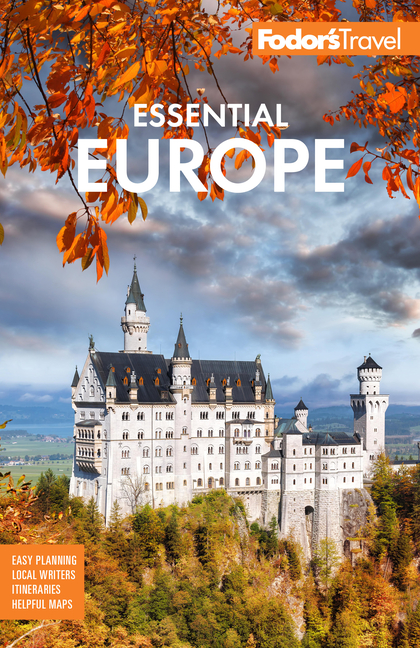Slovenia's small but exceedingly charming capital is enjoying a tourism renaissance. Tourism officials now talk of Ljubljana proudly in the same breath as Prague or Budapest as one of the top urban destinations in Central Europe. That may be enthusiasm and excitement talking as opposed to reality, but there's no denying a sense of excitement as new hotels and restaurants open their doors, and each month seems to bring another admiring article in a prestigious newspaper or magazine abroad. Unfortunately, there is still no nonstop service from the United States.
The compact city center is immediately captivating. Part of the charm is doubtless the emerald green Llubljanica River that winds its way slowly through the Old Town, providing a focal point and the perfect backdrop to the cafés and restaurants that line the banks. Partly, too, it's the aesthetic tension between the stately Baroque houses along the river and the white neoclassical, modern, and Secessionist set pieces that dot the streets and bridges everywhere. Meticulously designed pillars, orbs, and obelisks lend the city an element of whimsy, a feeling of good cheer that's immediately infectious. And part of the credit goes to the Ljubljaners themselves, who on a warm summer evening can be counted on to come out and party in force.
In truth, Ljubljana has always viewed itself as something special. Even when it was part of the former Yugoslavia, the city was considered a center of alternative music and arts. This was especially true during the 1980s, when it became the center of the Yugoslav punk movement. The band Laibach, noted for mocking nationalist sentiments, was the musical wing of the absurdist conceptual-art group Neue Slowenische Kunst (NSK), earning Ljubljana a reputation for pushing creative boundaries.
The romantic heart of the Old Town dates back centuries. The earliest settlement was founded by the Romans and called Emona. Much of it was destroyed by the Huns under Attila, though a section of the walls and a complex of foundations—complete with mosaics—can still be seen today. In the 12th century, a new settlement, Laibach, was built on the right bank of the river below Castle Hill by the dukes of Carniola. In 1335, the Habsburgs gained control of the region, and it was they who constructed the existing castle fortification system.
The 17th century saw a period of baroque building, strongly influenced by currents in Austria and Italy. Walk along the cobblestones of the Mestni trg (Town Square) and the Stari trg (Old Square) to see Ljubljana at its best, from the colored baroque town houses with their steeply pitched tile roofs to Francesco Robba's delightful Fountain of the Three Carniolan Rivers.
For a brief period, from 1809 to 1813, Ljubljana was the capital of Napoléon's Illyrian Provinces. In 1849, once again under the Habsburgs, Ljubljana was linked to Vienna and Trieste by rail. The city developed into a major center of commerce, industry, and culture, and the opera house, national theater, national museum, and the first hotels came into existence.
In 1895 much of the city was devastated by an earthquake. The reconstruction work that followed was carried out in florid Viennese Secessionist style. Many of the palatial four-story buildings that line Mikloši?eva, such as the Grand Hotel Union, date from this period.
After World War I, with the birth of the Kingdom of Serbs, Croats, and Slovenes, Ljubljana became the administrative center of Slovenia. Various national cultural institutes were founded, and the University of Ljubljana opened in 1919. If you have been to Prague, you will already have seen some of the work of Jože Ple?nik (1872–1957). Born in Ljubljana, Ple?nik studied architecture in Vienna under Otto Wagner, then went on to lecture at the Prague School of Applied Arts and served as the chief architect for the renovation of Prague Castle. It was Ple?nik who added many of the decorative touches to the city's parks, squares, and bridges. Some of his finest projects include the Triple Bridge, the open-air market on Vodnik Square, and the plans for the Križanke Summer Theater.
The city's years as part of Yugoslavia, under the leadership of Josip Broz Tito, saw increased industrialization. The population of Ljubljana tripled, and vast factory complexes, high-rise apartments, and modern office buildings extended into the suburbs.





